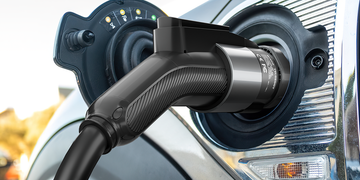The electric vehicle (EV) revolution is well underway in the United States, with a growing number of EVs hitting the roads. One crucial aspect of this transition is the development of an extensive and accessible network of electric vehicle charging stations. EV charging infrastructure is a cornerstone of making electric vehicles a practical and convenient choice for both current and future EV owners. In this article, we delve into the current state of EV charging stations in the USA.
A Dynamic and Expanding Network
The number of electric vehicle charging stations in the USA has experienced significant growth in recent years. This expansion is a testament to the nation's commitment to reducing greenhouse gas emissions, promoting clean energy, and making EVs a viable and convenient mode of transportation.
As of the most recent data available, there were thousands of EV charging stations across the country, encompassing various charging levels and types to cater to different EV models and consumer needs. These stations are typically categorized into three primary levels:
Level 1 (120V): This is the basic charging level that allows EV owners to charge their vehicles from a standard household electrical outlet. While convenient for overnight charging at home, it is less common in public charging infrastructure.
Level 2 (240V): Level 2 charging is more widespread and faster than Level 1, providing a significant boost in charging speed. These charging stations are commonly found in residential areas, workplaces, and public parking facilities.
Level 3 (Fast Charging): Level 3, also known as DC fast charging, is the fastest charging level available to EV users. These high-power chargers are typically located along highways, major travel routes, and in metropolitan areas, offering rapid charging sessions that can replenish a significant portion of an EV's battery in a short time.
The Need for Expansion
Despite the impressive progress, there is still a need for further expansion of the EV charging network in the USA. Several factors contribute to this demand:
Increased EV Adoption: As more consumers switch to electric vehicles, the existing charging infrastructure must grow to meet the rising demand. To alleviate range anxiety and make EV ownership more attractive, a denser charging network is required.
Long-Distance Travel: Expanding the charging network along highways and long-distance routes is essential to facilitate intercity travel for electric vehicle owners. Ensuring the availability of fast charging stations on these routes is vital.
Balanced Distribution: It is essential to ensure a balanced distribution of charging stations, making them accessible in urban and rural areas. Equitable access to charging infrastructure promotes EV adoption across all demographics.
Charging Speed: The availability of Level 3 fast chargers is vital for those on extended journeys or in need of a quick top-up. Ensuring these high-speed chargers are readily available is essential to meet the expectations of EV drivers.
Charging Standards and Interoperability: Establishing charging standards and interoperability across various charging networks is crucial to simplify the charging experience for EV owners and provide them with more options.
Promoting Investment and Collaboration
The expansion and development of the EV charging station network depend on a collaborative effort among federal and state governments, private companies, and the EV industry as a whole. Incentives, funding, and policies to support EV charging infrastructure are pivotal in accelerating its growth.
The State of EV Charging Stations in the USA, the United States has made remarkable progress in expanding its electric vehicle charging infrastructure, but there is still much work to be done. The ongoing expansion of this network will play a crucial role in making electric vehicles a practical choice for a broader range of consumers and in achieving environmental sustainability and reducing carbon emissions in the transportation sector. As electric vehicle adoption continues to rise, the charging infrastructure must evolve to meet the changing needs of EV owners across the country.
News-Telgeoot EV Charging Station
The State of Electric Vehicle Charging Stations in the USA





